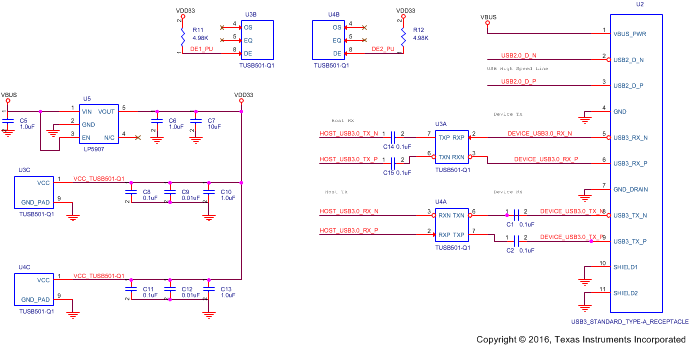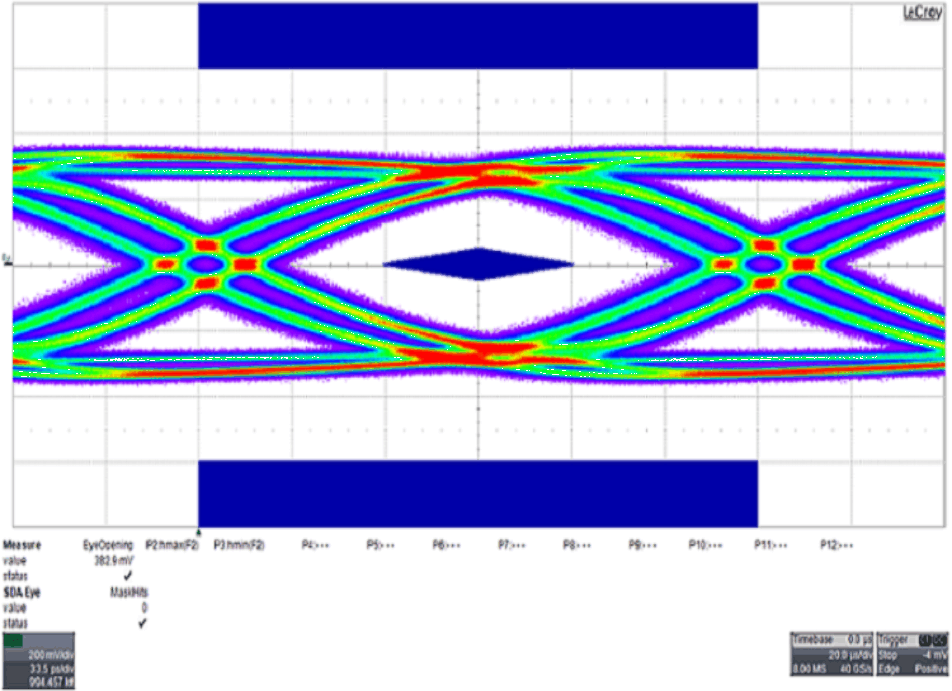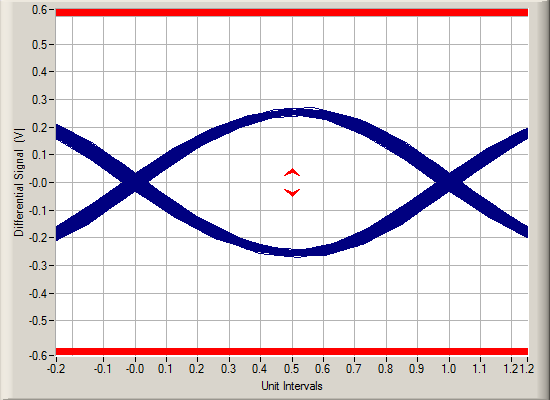ZHCSFA8 May 2016 TUSB501-Q1
PRODUCTION DATA.
10 Application and Implementation
NOTE
Information in the following applications sections is not part of the TI component specification, and TI does not warrant its accuracy or completeness. TI’s customers are responsible for determining suitability of components for their purposes. Customers should validate and test their design implementation to confirm system functionality.
10.1 Application Information
One example of the TUSB501-Q1 used in a Host application on transmit and receive channels is shown in Figure 8. The re-driver is needed on the transmit path to pass transmitter compliance due to loss between the Host and connector. The re-driver uses the equalization to recover the insertion loss and re-drive the signal with boosted swing down the remaining channel, through the USB3.0 cable, and into the device PCB. Additionally, the TUSB501-Q1 is needed on the receive channel for the Host to pass receiver jitter tolerance. The re-driver recovers the loss from the Device PCB, connector, and USB 3.0 cable and re-drives the signal going into the Host receiver. The equalization, output swing, and de-emphasis settings are dependent upon the type of USB3.0 signal path and end application.
10.2 Typical Application
 Figure 8. Application Schematic
Figure 8. Application Schematic
10.2.1 Design Requirements
For this design example, use the parameter shown in Table 2.
Table 2. Design Parameters
| PARAMETER | VALUE |
|---|---|
| VCC | 3.3 V |
| Supply nominal current | 250 mA |
| Operating free-air temperature | TA = 25°C |
| CAC AC coupling capacitor | 100 nF |
| Pull-up resistors | 4.98 kΩ |
10.2.2 Detailed Design Procedure
To begin the design process, determine the following:
- Equalization (EQ) setting
- De-Emphasis (DE) setting
- Output Swing Amplitude (OS) setting
The equalization should be set based on the insertion loss in the pre-channel (channel before the TUSB501-Q1 device). The input voltage to the device is able to have a large range because of the receiver sensitivity and the available EQ settings. The EQ terminal can be pulled high through a resistor to VCC, low through a resistor to ground, or left floating. The application schematic above shows the implementation.
The De-Emphasis setting should be set based on the length and characteristics of the post channel (channel after the TUSB501-Q1 device). Output de-emphasis can be tailored using the DE terminal. This terminal should be pulled high through a resistor to VCC, low through a resistor to ground, or left floating. Figure 8 shows the implementation. The output swing setting can also be configured based on the amplitude needed to pass the compliance test. This setting will also be based on the length of interconnect or cable the TUSB501-Q1 is driving. This terminal should be pulled low through a resistor to ground or left floating. Figure 8 shows the implementation.
10.2.3 Application Curves

| DE = 0 dB | EQ = 6 dB | 8 Input Trace |

| DE = 0 dB | EQ = 6 dB | 8 Input Trace |